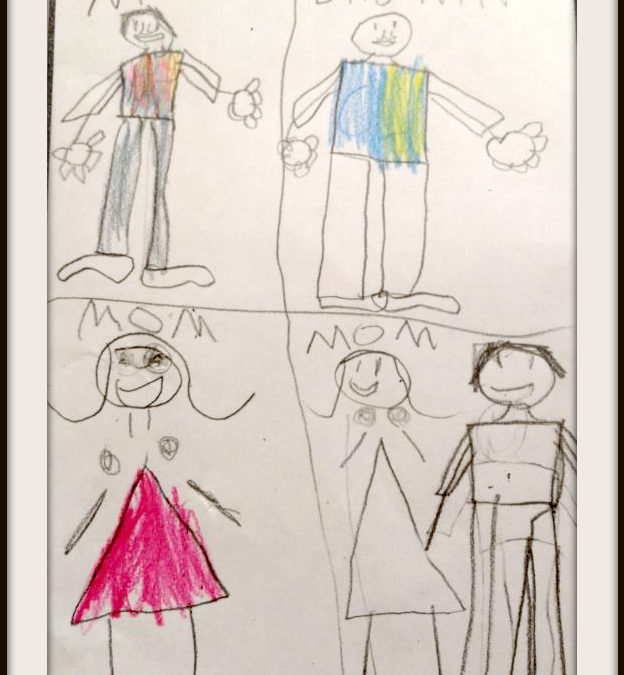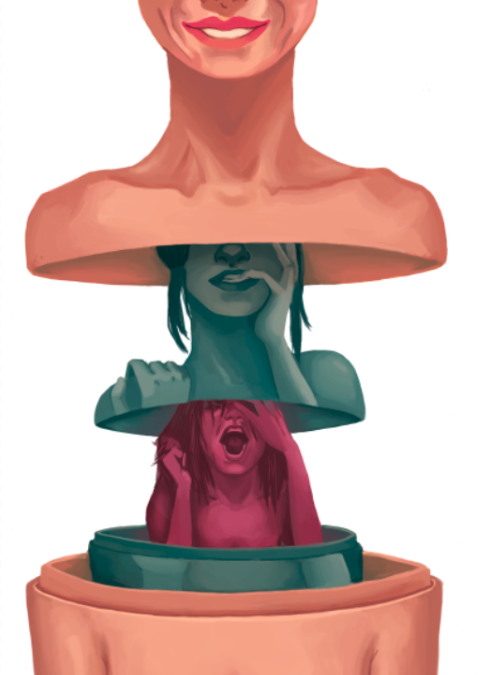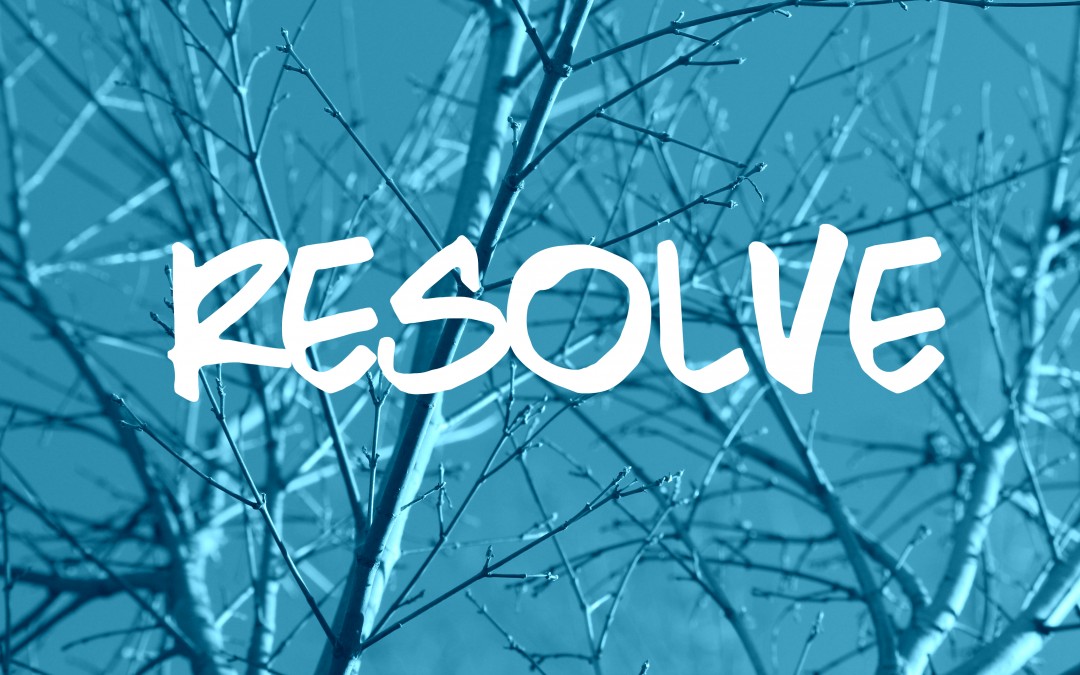
by Rachael Chatham | Apr 23, 2014 | Therapeutic Services
When I got married two years ago to my (now) husband, a father of two boys, I was hopelessly romantic and admittedly naive about what becoming a step-mother would entail. As a child of divorced parents I have run the gamut of good, bad, and ugly in the world of blended families, but even that was not sufficient to prepare me for my own journey into step-motherhood!
While the past couple of years have had their ups and downs, I feel that I have now traversed at least most of the major transitions that every blended family goes through. Having done so, I can easily say that I have ‘made it’ thanks to the supporters in my life who have listened, empathized, offered feedback, and have just generally ‘been there.’
If you are a new step-parent, or considering marrying (or committing to) someone with children from a previous relationship and find yourself dealing with the challenges of navigating all of those new relationships, I strongly encourage you to reach out for support!
I offer one-on-one counseling for step-mothers and step-fathers who are transitioning into new roles or are dealing with difficult dynamics in their relationships.
Contact me today to schedule a session to discuss your particular struggles or concerns with regard to blended families.
A few additional resources for step-parents:
- The National Stepfamily Resource Center – a division of Auburn University’s Center for Children, Youth, and Families with information about both facts and fiction when it comes to stepfamilies.
- Steps for Stepmothers – A discussion board for step-mothers to get support from one another and get ideas and feedback.

by Rachael Chatham | Mar 1, 2014 | Therapeutic Services
Anxiety is a normal human response to stress. Everyone, at some point in their lives, experiences anxiety. The degree to which our anxiety impacts our relationships to ourselves, to the people in our lives and the world around us varies depending on a number of factors.
From a feeling of butterflies in the belly that transforms into an excited, energized feeling of electricity throughout the body, to an outright panic attack that seems to take over our ability to regulate our own physical body, and may take days to recover from, anxiety encompasses a broad spectrum.
Some of the most common causes of anxiety which I frequently work on with clients include:
- Meeting new people
- Perfectionism
- Difficult relationships with friends or family
- Performance anxiety
- Job interviews and work related stress
- Changing bad habits
- Traumatic life events
- Social situations
Some of the negative thinking that often accompanies anxiety:
- I am such a weirdo/fool/idiot
- There must be something wrong with me
- Everyone can see all of my flaws
- I am not normal
- Things are never going to change, I am always going to be like this
While in graduate school, one of my favorite teachers, Sue Ellen Wise, shared a German expression with me that reframed the way I looked at anxiety. Loosely translated, it is “anxiety is excitement that hasn’t taken a breath.” When we can acknowledge our feelings of anxiety in a non-judging way, and remember to breathe, our experience of tightening and contraction gets a little more space and we are freer to respond to our environment with more ease and spontaneity.
In my private psychotherapy practice, I provide anxiety therapy and work with clients who struggle with feeling anxious. Using a holistic approach that includes mindfulness meditation, relaxation techniques, breath-work and other modalities, we work together to discover the true cause of your anxiety and collaborate to increase feelings of self-kindness and acceptance, disarming the fear-based thinking that creates anxious feelings.
Contact me today to schedule an appointment to begin to work with your anxiety in a productive way.
The image Hidden Anxiety is by artist Jordan Hourie and you can find more of her beautiful work at http://jordanhourie.tumblr.com/ and at https://www.behance.net/jhourie

by Rachael Chatham | Jan 13, 2014 | Therapeutic Services
A General Theory on How Dreams Work
- Dreams are meant to balance our waking perspectives/subjectivity to give insight on another way of viewing our life situation
- Dreams ‘speak’ to us in symbols and metaphors, using stored material in the form of images from our memories that serve as associations to express unconscious conflicts/feelings/experiences
Dreams were compensatory to the conscious point of view; expressions of aspects of the individual which were neglected or unrealized… often expressions of the ‘other side’ trying to assert itself.
– Anthony Storr, The Essential Jung
The Purpose of Engaging and Exploring Dreams
- To offer a different way of looking at our life’s circumstances, giving us new perspectives, creating a more holistic viewpoint
- Gain a deeper understanding of our experiences
- Decrease anxiety and stress and increase a sense of control over one’s life
- Increase a sense of connectedness to inner resources and understanding of healing
The dream is a message from and to the dreamer about their chosen mode of being-in-the-world.
– Eric Hall, Carol Hall, Pamela Stradling and Diane Young, Guided Imagery
How to do Dream Work
- Symbol appreciation, or exploring personal and collective associations with dream imagery
- Expressive Arts – recreating the dream or symbols of the dream through drawing, painting, sculpting, collage, mandalas or movement
- Dream re-entry using guided imagery
- Engaging with various elements of the dream using Active Imagination
All dreams come in the service of health and wholeness.
– Tallulah Lyons, Dreams and Guided Imagery
If you would like to schedule a one-on-one session or are interested in exploring your dreams in a small-group format, click here to set up an appointment.

by Rachael Chatham | Dec 26, 2013 | Good Reads, Therapeutic Services
The New Year represents new beginnings, a fresh start, a chance to get closer to the person you would like to be, the life you want to be living. Setting aside bad habits, letting go of crutches that you may have outgrown or no longer need and patterns that are no longer serving you can be both empowering and challenging. Ultimately, we all want to feel better about our bodies, minds, capabilities, or station in life, but how do we implement our ideas of being more fit, well educated, healthier, or more financially secure?
According to the blogpost Hacking Habits: How To Make New Behaviors Last For Good by Jocelyn K. Glei on www.99u.com , there is a very specific protocol for changing behavior. Through modifying habit loops, which include the 3 steps ‘cue, routine, and reward,’ we are able to set ourselves up for success in our new endeavors.
If you want to get rid of a bad habit, you have to find out how to implement a healthier routine to yield the same reward. – Charles Duhigg, The Power of Habit: Why We Do What We Do in Life and Business
If you are seeking to create life changes this new year and would the support of a Licensed Professional Counselor, contact me to set up an appointment. It would be my honor to help you to create and maintain positive change in your life!




